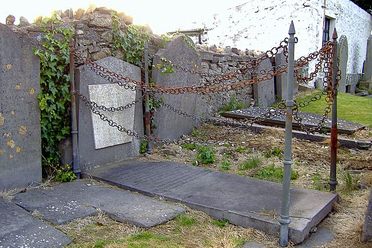10 Places Where It Seems Like Vampires Are More Than Myth
Sometimes superstition leaves a mark on the world.
It was plague and disease that really allowed the mythology of vampires to spread its leathery wings over Europe during the Middle Ages. These afflictions could cause grotesque ailments, such as bleeding from the mouth and weeping sores, that made the living resemble—and in some cases envy—the dead. In an age before these pathogenic diseases were well understood, superstition and fear consumed reality.
In the Rynek Underground Museum in Poland, there are graves in which the deceased were buried in a fetal position, with their hands bound and heads cut off and placed beneath their feet—to slow their rise from the earth. In Connecticut, an old graveyard serves as the final resting place of a 19th-century family that thought it was haunted by vampires. After settling in the area, Henry and Lucy Ray’s family was stricken by tuberculosis, resulting in the death of two of their sons. As the disease continued to affect family members, they believed dark forces were at work. The couple exhumed their oldest sons and cremated their remains before reburying them to protect themselves from the undead. From 19th-century vampire-slaying kits to the dungeon that’s said to have once held Vlad Dracula, here are some places where the mythos of vampires manifested in the real world.




























Follow us on Twitter to get the latest on the world's hidden wonders.
Like us on Facebook to get the latest on the world's hidden wonders.
Follow us on Twitter Like us on Facebook